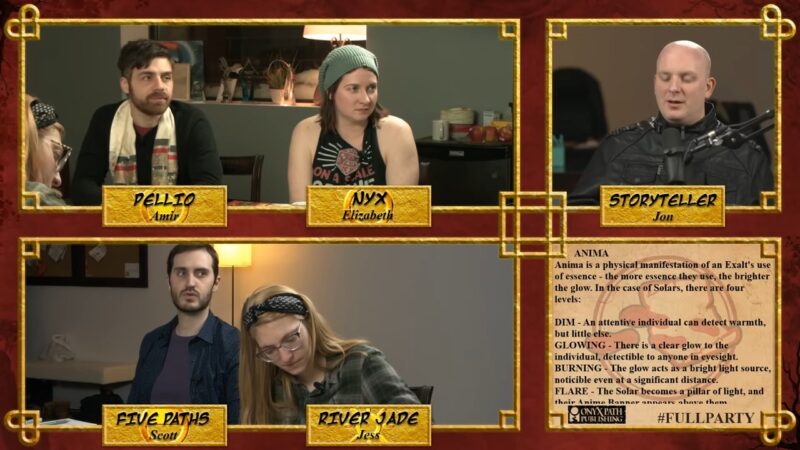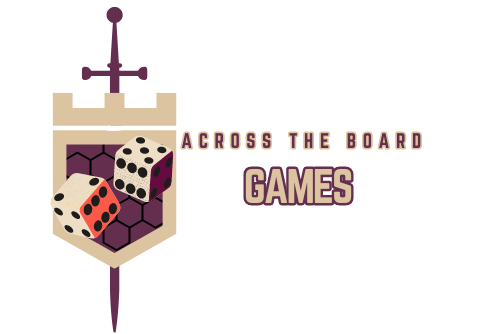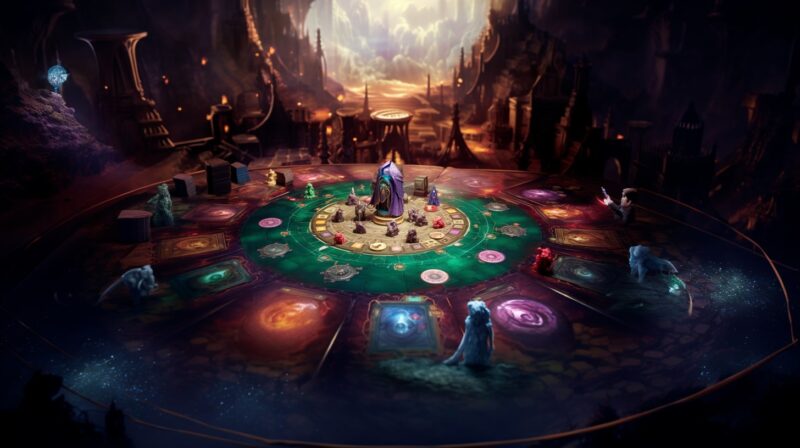Over the course of time, the splendor of the Solar Exalted has transitioned from being a part of history to becoming a legend, and eventually, a myth. Now, with the shattering of the Jade Prison, the Chosen of the Unconquered Sun are making a grand comeback, signaling the dawn of a new era. But the question remains – will this era be filled with marvels or shrouded in despair?
What am I referring to? I’m talking about Exalted, a tabletop role-playing game from Onyx Path (formerly White Wolf). Set in a world reminiscent of our own prehistoric times, Exalted offers a high-fantasy, sword-and-sandal environment where players step into the shoes of mortals blessed with divine powers.
These mortals have the chains of fate removed from their wrists and placed in their hands like reins. Excitingly, the PDF and Print-On-Demand versions of the Core rule book for Exalted: 3rd Edition have just been made available to the public!
Drawing inspiration from a variety of historical and fictional works (including the Trojan War, the Mahabharata, and Imperial China), the game offers a plethora of intriguing locations and scenarios that can spark character ideas. At present, players can embody the Solar Exalted, the apex predators in the hierarchy of the super-powered beings collectively known as the Chosen. As more books are released, additional Exalted types will become available for play.
The transition from the previous 2nd edition to the current 3rd edition has brought about numerous changes, and we can expect even more alterations to surface as new books and supplements are published.
Character Creation and Experience Points in 3rd Edition
There is a lot more flexibility and player choice involved in character creation, compared to previous editions. This makes your character feel more complete, instead of feeling like your powers amount to being the “Master of the Leftovers” just because you had to spend so many points in restricted abilities.
There has obviously been an effort to streamline the way players spend experience points. Certain Charms, or powers, have now been handed over at no additional experience point cost at all. This is rather nice, as the previous editions would have “speed bump” Charms that seemed to just inflate the lists of powers just to slow character progression, and be an experience point sink.
Another example is the change to Essence progression (an important “power stat” that is traditionally expensive to raise the value of) makes it so that your Essence rating raises automatically when you spend experience points.

Changes in Powers and Abilities
Excellency is the new form of Excellencies from 2nd Edition (which replaced the “why doesn’t this Ability have a dice adder Charm?” problem). Excellency the new normal for achieving the dramatic action your character wants to succeed in.
In 2nd Edition, most people only really bothered with learning the 2nd Ability Excellency (a power which let you just buy successes) and this turned actions into a series of certainties, rather than dramatic successes or failures. Now, everyone just has access to the “1st Excellency” from the previous edition (which adds dice to a roll, or potential successes), but now that power has keywords that trigger differently for different Exalt types. Honestly, I think this was a very good change, it’s the biggest “This was done 100% right” thing I can say about this edition.
Charm trees grew massively this edition. However, they started adding more permanent and passive effects as Charms, rather than “And now, you can do this!” type powers. The later still exists, but your character starts to feel like they are gaining buffs that are “always on” as you progress, and that’s a rather satisfying feeling.
Sorcery got a change in how you execute and complete spells. Previous editions sort of nerfed Sorcery from the gate by making it a power set that was defined by being able to do anything, but having it be a slower, and more expensive process. This effectively turned it into a utility power set for min/maxers, or (on the other hand) you would end up with a player that wanted to be “The Wizard” who only ever gets to charge up a third of his first spell before the fight is over.
In 3rd Edition, there is still some slowness, but now they have mechanics where you can prepare to quickly launch a spell when you desperately need it, rather than being forced to re-enact the power-up scenes from Dragon Ball Z.
In addition, countering or disabling Spells and effects became more interesting, and is more like a side-battle between mages, rather than a case of just spending a bunch of magic points (motes). Now it’s more like… Well, I think The Wheel of Time expression of “weaving” describes it best. Now Sorcerers battle to shape and un-make grand magical constructs and blasts of power, while their more martial allies do battle with soldiers.
Martial Arts turned into a very exclusive power set that now makes more sense, and also means all Exalts can practice a style. Previously, styles were divided into three tiers: Terrestrial, Celestial, and Sidereal. The tier of the style lent to the power of the techniques learned, which means that the average Solar Exalted character would ignore as much of the mechanics as possible and go straight for the highest techniques they can.
In 3rd Edition, each Charm tends to have one or two tags added to it, and the body of the Charm explains how that tag behaves, depending on the type of Exalt using the Charm. So, you could have a mixed game of martial artists, who studied at the same Mantis Style studio, but the power level of their Exaltation shows the difference in power of each technique.
The “Mastery” tag tacks on more powerful and potent effects to a Charm, and means that when a Solar Exalt (or equivalent) is using the Charm, they get the Mastery effect too. The “Terrestrial” tag is the nerfed effects that are applied to the technique when a Dragon-Blooded (or equivalent) is using the Charm. Anyone who falls between those extremes of power level, just gets the technique as-is. Lets make up an example!
A Solar, Lunar, and Dragon-Blooded trio of students learn “Punch You Hard Technique” from their master. The Lunar using the Charm gets to add their Strength rating in dice to any damage rolls. The Solar gets access to the Mastery tag that says that they get to add their Strength rating in automatic successes to any damage rolls.
The Dragon-Blooded has to apply the Terrestrial tag effect, meaning they have to roll their Strength rating -2 additional dice to all damage rolls. It’s the same technique, and the same style, and everyone gets to learn it, just certain power levels get a boost, or capped based on how awesome they get to be.
Weapons and armor got an amazing simplification! This is another “They did this 100% right” thing for me. All weapons are described as Light, Medium, or Heavy. The numerical stats are all the same, for the same type. Light weapons have high accuracy but low base damage, Heavy weapons are the opposite, and Medium is obviously in the middle.
What’s the difference between one kind of sword and another? This time the differences are determined by Tags. Tags are traits that modify the weapon, but they are not unique to a weapon family. The tag descriptions explain when they could be applied, based on what the effect is supposed to be. Some things can be thrown well, others are better balanced, some things can punch through armor, etc.
The setting and lore of Creation (the name of Exalted’s world) are sketched out more than detailed this time around. The authors present a coherent world, but players are encouraged to make the Creation they play in uniquely their own.
A new mechanic tied to the Lore ability lets players Introduce Facts to their table’s game. This adds a personal touch and smartly takes stress off of the game master too by not making them flesh out every section of the setting in advance. It also plays well to Exalted’s reputation of player empowerment.
Now, for some good and bad with Charms. Exalted uses a dice pool resolution mechanic, using d10s. This means that for any roll you will roll typically between 1-10 10-sided dice, with any dice showing 7 or higher being marked a “success” and a 10 granting two successes. Exalted 3rd Edition introduces the idea of “Double 10/9/8/7” rules, where the number indicated is the number, and above, that generate two successes when rolled.
Well, this trait comes up in all the Charm trees, to the point that it feels like it should have been an Excellency on it’s own. Perhaps even a Minimum Essence access trait. In a lot of cases, however, many Charms that start dipping into Double 9’s have some other effect in addition, and Double 7’s effects live pretty much in the tops of each set of Charms.
Next, since there are fewer piles of “I’ve got 10 successes, before I even roll” situations (They just don’t exist yet, or are VERY specific on how/when that can even happen), many Charms have bonus effects if you spot number chains, or roll a 1 (or not). Seriously, it’s like playing mini-Yahtzee, it’s great. There is now a meta-dice rolling set of effects that can make you pull off more ambivalent wins and losses, instead of having everything be a “winner takes all” situation.
On top of that, the previous two editions stated that all ties went to the defender, and I assume this was meant as a measure to make self-defense always be worth it. Now, similar to Dungeons & Dragons, ties go to the “attacker” which makes this edition favor the pro-active player, and discourages a “turtling” attitude. Not that you can’t achieve that, but now the maximum defensive values are rather low, and the number of dice thrown at an action can get rather high!
This leads into combat, and I think it is an interesting change and solution, but I feel the jury is still out on how well it works, from my own personal experience.
Combat and Stunts in Exalted’s 3rd Edition
Attacks are defined as Withering or Decisive, and each one attacks a different Health track. Withering attacks are supposed to be your feints, your working out an opening, the back-and-forth of an epic cinematic duel. Withering attacks deal “damage” to a person’s Initiative, which is an abstract measure of your tempo and advantage in a fight, and determines when you act during a round of combat.
Decisive is supposed to be the actual hit that lands, and does something dangerous. Decisive Attacks deal damage to your actual health track, and this is where you can end your opponent in one fell swoop. A good example of this would be the duel between Luke Skywalker and Darth Vader during Empire Strikes Back.
Both warriors set up a series of Withering attacks- trying to find an opening, a perfect moment to strike. Once his momentum was built, Vader finally cashed in his Initiative to do a Decisive Strike and dismember Luke’s hand! That’s supposed to be how it works, but in practice I’m not sure it always plays out that well.
Stunts have been changed. “Stunting” has been the mechanic where a player will spend more effort describing an action. Stunting usually involves players using purple prose and slowing the action down a bit to help crystallize a moment of awesome that their character is having.
It also serves as a method to beg the Storyteller for some bonus dice to a roll, particularly in dire circumstances! In previous editions, the main method for regaining motes (magic points) in the middle of a fight was to succeed at a stunt, which gave you motes based on how awesome sounding the described action was.
Now mote regen is automatic at the end of every round of combat, and is static. Stunting does give much better rewards though. A simple stunt gives two extra dice; a better stunt will give two extra dice, a bonus success in addition to what you’re about to roll, and if you succeed in the action, a point of Willpower regained!
The best stunts will give all the previous rewards, but two total extra successes, two points of Willpower regained, and narrative immunity from bad plot… things- even if you don’t quite roll high enough to succeed.
An example would be leaping over a fiery pit. Instead of failing, and falling to your doom (after helping build the dramatic descriptive tension for everyone at the table) your character would maybe have jumped when the fire flared, taking a bit of damage, but still landing on the other side, trying to smother your smoldering clothes.
Here’s a video of a full gameplay:
The Evocations System and Final Thoughts
One thing in this book that does infuriate me is the lack of support the Evocations system gets, with reference to artifact tier weapons and armor. There are Charms and spells that reference the mechanics, but there is nowhere in the book explaining how to use the Charms, or how to improve on magic items.
This will be released in an upcoming book that is effectively the “Artifact Book”, but I think some more room could have been spared to give us something to work with. There are example items to pull from, but already my pitch of Evocations is unattractive to the group I’ve been running this edition with.
All around, Exalted 3rd Edition has been fun. We’ve ran into some speed bumps while learning the new game, but mostly when we fall back on assumed rules that were ingrained from previous editions. Exalted 3rd Edition is a decent jumping-on point for new fans, and I think this game setting is especially fun if you’re familiar with ancient world legends and myths.

